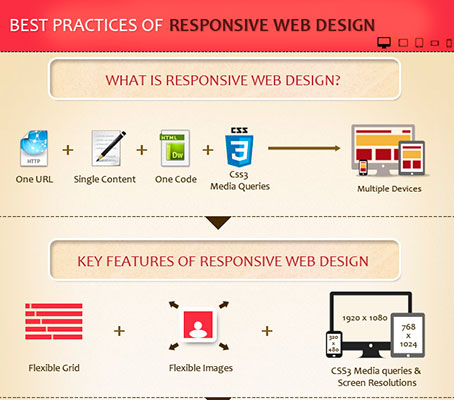Key Elements Of Web Site Layout: Techniques For Developing An Easily Accessible Customer Experience
Key Elements Of Web Site Layout: Techniques For Developing An Easily Accessible Customer Experience
Blog Article
Material Author-Hovmand Secher
When it involves internet site design, guaranteeing user-friendliness is essential. From responsive layout to streamlined navigation, every component plays a crucial role in developing a website that caters to your target market's needs. But what concerning the finer details that can make or break a user's surfing experience? Stay tuned as we reveal some often-overlooked pointers that can elevate your internet site's functionality to the next level, making it absolutely attract attention in the electronic landscape.
Significance of Responsive Design
Receptive layout is a crucial aspect of contemporary internet site advancement. Guaranteeing your website is responsive ways that it can adapt to different display dimensions and gadgets, giving a smooth experience for customers.
With the increasing use smartphones and tablets to access the internet, having a receptive design is essential for reaching a larger target market. It aids in boosting user experience by making your site very easy to navigate and read on any type of gadget.
Additionally, mouse click the following website page can favorably impact your search engine rankings, as internet search engine like Google prioritize mobile-friendly internet sites. By having a responsive layout, you're additionally future-proofing your website, as new tools with differing display dimensions continue to arise.
Simplify Navigating Framework
To boost individual experience and facilitate simple access to details on your web site, streamlining the navigating framework is critical. When making your site, focus on producing a clear and user-friendly navigating menu that helps site visitors find what they're searching for quickly.
Limit the number of food selection items to the essentials, organizing related pages with each other to prevent overwhelming users. Use detailed tags that plainly indicate the content of each page, making it easier for users to comprehend where each web link will take them.
Consider implementing dropdown menus for subcategories to stop cluttering the main navigating bar. Additionally, include a search bar prominently on the page for customers that like looking for certain details.
Prioritize mobile responsiveness in your navigation layout to ensure very easy access on all tools.
Enhance Web Page Load Speed
Improving web page lots rate is crucial for maintaining visitors on your internet site. Slow-loading web pages discourage individuals and can cause high bounce prices. To enhance https://theubj.com/featured/30026/5-digital-marketing-strategies-for-your-campaign/ , begin by optimizing pictures. Compress types of business websites without endangering quality to reduce their file sizes.
In addition, enable internet browser caching to store frequently accessed sources locally, accelerating lots times for returning site visitors. Minify CSS, JavaScript, and HTML files by getting rid of unneeded characters, comments, and format, boosting load rate.
Take into consideration making use of a material shipment network (CDN) to distribute your site's content across numerous web servers worldwide, minimizing latency for customers accessing your site from various locations. Lastly, limit the use of third-party scripts and plugins, as they can dramatically affect load times.
Final thought
In conclusion, by including receptive design, simplifying navigation, and maximizing page load speed, you can create an easy to use site that interest a larger audience and improves user experience. These essential elements make sure that site visitors can conveniently accessibility and browse your site throughout various devices, bring about boosted interaction and satisfaction. By focusing on these crucial elements, you can construct a successful web site that keeps users coming back for more.
